Samuel J Osborne (1864-1928)
Introduction
to Expand
The name of Samuel James Osborne will probably not now mean very much to Tewkesbury folk but, in his day, he was quite a well-known character. Derek Round learned a lot about Mr. Osborne: a local Pioneer if ever there was one, in cycling, motoring and, even, in aviation.
Research started as long ago as 1986 when a Tewkesburian, the late Jack Wilkins, then had a fishing tackle shop in Barton Street. Derek, a ‘pleasure fisherman’, was always in and out of his shop, buying fishing tackle and bait. One day, Mr. Wilkins showed Derek an old Tewkesbury book, title being, the Official Guide to Tewkesbury the Cradle of English History, published in 1903. In the book is a trade advertisement of ‘Osborne Cycle and Motor Car Depot’; Mr. Wilkins told Derek a little about Mr. Osborne. After speaking to another Tewkesburian, the late Cecil Hewett of Bakers Square (better known as ‘Harry’), who was born in 1892, and who knew so much about our Pioneer, Derek then ‘laid the story down’ in 1986.
However, it was not until 2001 that he picked it up again, after he had spoken to another local man, Roy Cole of Church Street. Derek had asked him if he knew of any relations of our Pioneer who were still living in the town. He replied that Elsie Gurney of Mitton, whose maiden name was Brush, was a grandchild of the Pioneer. Mrs. Gurney turned out to be very important because she had photos and also newspaper cuttings of her grandfather. It was this discovery that reawakened Derek’s interest to go further with his research work. He and Cath then finally started to write the history the Pioneer on 19 July 2004, some eighteen years after his first interest.
(Jack Wilkins Collection)Click Image
to Expand
By 1881, James Osborne had moved temporarily to Mangotsfield near Bristol, where he was described as an “unemployed foreman in a boot factory”. Our Pioneer was then living with his uncle, John Surl, the Manager of town’s Gasworks in Oldbury Road. The Gasworks site is now part of the fire-engine station. By this time, Samuel was a Railway Clerk, possibly at Tewkesbury Station.[1]
The 1891 Census tells us the Pioneer was back living with his father James Osborne, who had now found a new job, as Manager along with his wife, of the Coffee Tavern at 105 Church Street; now this is part of the job centre. Illustrated here is a token, which would cover 1d worth of refreshments. In 1891 the Pioneer was still a clerk, but was working for Richard Fluck, Corn Merchant, of 40 High Street; today it is a dental practice. However, the Pioneer was more interested in repairing cycles in his spare time. Not surprisingly by the time of the 1901 Census, Samuel James Osborne was now a Cycle Agent and his address was 123 High Street. He was married to Mary Brown aged 37, who had been born in Stourbridge, Worcestershire. They had five daughters: Gladys (2). Elsie (8), Rose (10) with Frances and Peggy born after 1901. In fact, his obituary tells us he had four daughters by his first wife, who died 8 August 1903 aged 40 years; it omits Elsie who had died prematurely, aged 24 years, on 13 May 1916. Mary and Elsie are buried together in Tewkesbury Cemetery.
123 High Street is now Courtney World Travel. The late Cecil Hewett, who was born in the town in 1892, told Derek in 1986 about Osborne’s trade card: he was then hiring cycles and cars as well as offering motor driving lessons. Derek also asked Cecil about the box, which he had noticed, outside the shop. Cecil told him that it was a fire hydrant. He said that, in those days, as they only sold petrol in one-gallon tins, there were no petrol pumps. In 1889, our Pioneer had the first licence to sell petrol in Tewkesbury. He told me that the wooden box seen outside was, in fact, the first piped water to come to Tewkesbury Town: it was gravity fed, from the Mythe Hill and it went as far as the Crescent, where the gravity ran out.
The first fire hydrant was on the corner of the Black Bear; the next outside 123 High Street and on to the doctor’s surgery at 77 Church Street. The water was used to clean the streets and against fire. To see a fire hydrant today, on the side of the road, you have got to go to the USA. The hydrant as seen above is wearing its winter coat: they stuffed the box with straw and hay to stop it from freezing, and they used to take it off in the summer months.
This photo has come from the 50 Years Ago section of a local newspaper, so it is possibly from 1900. The photo shows the Pioneer, with his first wife Mary, on a four-wheeled cycle, the tyres being midway between the old solid type and the modern pneumatic.[5]
Unwanted publicity came when a fraudster stole a bike worth £12 and tried to sell it in Coventry for £7 – he was rewarded, as a frequent offender, with three years prison.[6] Adverts in the Tewkesbury Register show us more about our Pioneer’s business: “First Class Motor Car for Hire” - whilst, a year later, he was advertising: “Bicycles for Sale, the Rover and Humber £10-10s, the New Hudson with 2-speed gear, £12-12s. Also selling an Ariel motorbike, 35 guineas”.[7]In his younger days, Mr. Osborne was one of the best cross-country runners in Tewkesbury. In the early 1880s, he was first man home in the first cross-country race (of 10 miles) of the Tewkesbury Harriers, who where pitted against Pershore. He was also a very good racing cyclist, and was a member of the local tricycle club, as well as the Tewkesbury Bicycle Club. Expansion was taking place as early as 1906-7 when Mr. Osborne bought two properties at the Back of Avon. The two storey buildings with the white gable, is labelled “Osborne Cycle Works and Garage”. The building next to it with the white roof, is the motor garage, the site was near to the modern green footbridge over the Avon.
Motor Pioneer
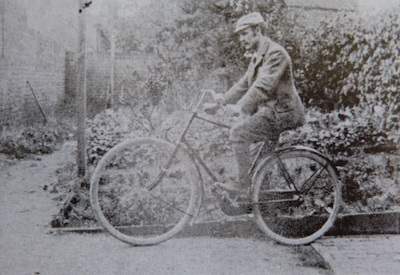
was taken at the rear of 123 High Street, according to
Mrs. Gurney. (Gurney Collection)
However, the Pioneer’s obituary told us about a change in interest from cycles[10] to the new invention of motor cars. Indeed, Derek’s researches found out that he attained a little fame in the specialist press as early as 1899.
The Pioneer obtained the first motor car in Tewkesbury in January 1899. The Register[11] reported that,
“At the present time, a very great stir is being made in France, America, and England, among engineers, by the advent of motor cars, and all seem to agree that in a very short time, many of the horseless carriages, will be seen on our highways. Through the enterprise of Mr. Osborne, our local cycle agent, who is ever on the lookout for improvements in light road vehicles, Tewkesburians will be the first in this country who will be able to see and try a really neat, light simple, comfortable, fast and powerful carriage of the new kind. After examining a large number of cars, Mr. Osborne has bought a “Model De Luxe” by the International Motor Car Company[12], and this vehicle he intends to hire at the ordinary Hackney Carriage Rates. We have seen it and consider it an unusually smart car. It carries four riders back to back, at any pace between four and twenty miles per hour, and is driven by a three and a quarter horse power engine, fed with petrol, ignited by electricity. Two powerful brakes make it perfectly safe over the steepest hill. The wheels are of the bicycle type, shod with one and three quarter solid rubber tyres. We are looking forward with pleasure to a ride, which the proprietor has promised to give us, and afterwards we will have a say about our first ride on a motor car.”
A week after the Pioneer brought his motor car, he hired it out, and this is the story of the exciting events that happened on that momentous day told in the eloquent words of the reporter: [13]
“The car was hired to convey three local men to Gloucester; the motor owner went gaily on his way, and reached Gloucester in good style. Whilst resting in its temporary quarters, at the New Inn, some curiosity driven idiot, whilst exploring its mechanism, carefully emptied the water belt, and otherwise disarranged its delicate machinery. The motor entered its protest against this impudent treatment, by declining to start when called upon by the legitimate master to do so. After a half hours coaxing its ruffled feelings where (temporary) sufficiently soothed to induce the sensitive animal to make a start. This happier frame of mind was maintained until Norton was reached, but here the memory of the recent outrage upon its most tender feelings re-occurred with renewed force, and the motor again refused to revolve its wheels. Coaxing, flattery, endearments, protests and revilings, were each tried, but in vain the motor was deaf to all. And now came the supreme moment of this motor’s existence, for those who had before treated it as their slave, became the motive power and pushed it to Coombe Hill; and thence to Tewkesbury trudged four weary men, at what time their erstwhile slave reclined in comfort quarters, and chuckled in its slumbers. But great minds never for long bear animosity, so that on Saturday, the motor was moving about the streets of Tewkesbury, with perfect smoothness, docility and swiftness.”
Lower Lode Hotel. This post card shows the location of the accident at the ferry in the 1920s (Round Collection)
“30 August 1899. Dear Sir, I write to protest against the recklessly dangerous and selfish way in which a motor car hailing from Tewkesbury is being driven about the country. A gentleman told me he has seen it twice lately rushing along at at least 25 miles per hour, and never stopping for a moment for a restive horse…. These horrible machines simply add a new terror …., and anything more selfish and cruel… cannot be conceived.” (Anonymous but admits to being a “small tithe owner”).
Our Pioneer replied, and more correspondence ensured until:“123 High Street Tewkesbury, September the 4th 1899. Dear Sir, I beg to acknowledge receipt of your favour of 2nd inst, and note with pleasure its greatly improved tone, but think you have missed my point. As it is absolutely impossible to keep motorcars and horses off the road, there is only one way to prevent accidents (assuming that both are properly driven) that is to get the horses thoroughly accustomed to the new traffic. It is the duty of every horse owner to do this, and I am willing, yea anxious, to assist. Adopt my suggestions, and your terrors will vanish.”
The letter brought forth a comment from the publication:[15]“If all users of auto cars would be as considerate towards drivers of horses as Mr. S. J. Osborne, of Tewkesbury, proved himself to be from the amusing correspondence which we published last week, and September the 16th the hostility which undoubtedly exists in some quarters against automobiles would be speedily disarmed. A country clergyman who drives a timid horse wrote to ‘The owner of the motor car, Tewkesbury’, protesting against ‘the recklessly dangerous and selfish way in which he drove his car’. He pleaded on behalf of his poor, timid, terrified horse for consideration, and laid upon the motor car driver the moral and legal responsibility of any accident, which might happen. The letter reached Mr. S. J. Osborne, who was the only owner of a motor car in Tewkesbury. [our emphasis] The gentleman, in reply, reminded the clergyman that autocarists had a legal right to the road, and he made the practical suggestion that the clergyman should get his horse accustomed to motor cars, to which end he offered to place his own car at the clergyman’s disposal.”
Our pioneer had some bad fortune as a garage owner. He was sued by Charles Trinder Smith formerly of the Lower Lode Hotel for £100 for the loss of his wife who died allegedly as a result of an accident caused by the Taxi driven by his chauffeur, who had picked the family up from the railway station. The chauffeur parked the ‘Model Ford’ pointing towards the river slope leading down to the Lower Lode Ferry. The engine stopped and the four passengers alighted with their baggage, he walked to the front of the car and started it with the starting handle. The car immediately moved off down the incline the driver tried to stop it with the handbrake but in that short time the car had ran over Mrs. Smith’s ankles and carried on into the river. No fault was found with the car, but the Judge found the driver guilty of negligence as to where he had stopped the car, and awarded £14.8s.6d. special damages and £50 general damages against Samuel Osbourne (sic).[16]This photo is taken around the middle of the 1920s with Jack Osborne outside the door of his father’s car showroom. Above the right hand door reads “entrance to workshop”; in the showroom there is a ‘Model T’ Ford for sale. It has been rebuilt as Mackays Clothes Shop. (Gurney Collection).
Our Pioneer’s interest in motor cars – especially Ford cars – came around about 1906, when he moved to 113 High Street. This was later known as Warners Motors and the shop today is rebuilt as Mackays clothes shop. By 1921 his business was evidently expanding Mr. S. J. Osborne successfully applied for a licence to store petroleum underground, and permission to fix a five-gallon petrol pump on the footpath. At the same time, he asked permission to convert his shop front into folding doors, opening over the pavement. However, the committee was unable to grant his application.17 Later on the council gave him permission to convert his shop, into a car showroom.
The late ‘Harry’ Hewett, who was a fully qualified car mechanic before the First World War, worked for his uncle, Fred Gyngell of the Central Garage, 1 Church Street.18 He told me the ‘T Ford’ had a very fierce clutch, and that, one day as he was walking down Oldbury Road, he saw Lewis Stroud, a chemist, of 124 High Street, winching his car into his garage. He clearly remembered that there was a wooden ramp leading into his garage, and he was winching the car backwards into the garage. Derek asked ‘Harry’ why he had not driven it in. He replied that, because they had a very fierce clutch, it would have “sort of kangarooed”: the two wheels could lift off the ground. Mr. Stroud was worried that it would take the back end of his garage out.
Photo: Ford touring car, later known as the ‘Model T’. The first person to own one in Tewkesbury was Dick Green. (See also Harry Workman, Memories, Vol. II p2)
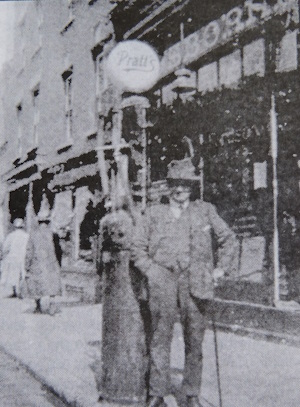
So how did our Pioneer manage to enter that car into the showroom of 123 High Street? The shop floor window was a concertina window that folded back; the Pioneer made a similar portable wooden ramp, leading from the road to the shop front. He had two ways of entering the shop: as there was no rear entrance, it would either be winched up, or pushed up. Osborne would be worried it would take the divided wall out of the shop if he drove it up.
Air Pioneer
to Expand
Photo: At the bottom, it reads “Pierre Verrier banking on a Maurice Farman Biplane flying at Hendon Aerodrome”. Our Pioneer flew in this. (This photo is a copy taken from a postcard, from the Round Collection)
Whilst he was building up his motor business, Samuel J. Osborne became the first Tewkesburian to fly in an aeroplane and that feat took place, on a Sunday afternoon at about 4.00 pm, on the 21 July 1912. The Pioneer had journeyed to the Hendon Aerodrome, London, where he had the pleasure of a short flight, with the celebrated French airman, Verrier, in a 70 horsepower ‘Farman Bi-plane’.
In a newspaper report,[19] the Pioneer frankly admits that: “ ‘the experience was disappointing’, as there were ‘no thrills, and no sensations’. This can probably be accounted for by the fact from the nature of his business, the Pioneer is used to ‘cleaving the air’ and the extra speed of the bi-plane, would be exhilarating. The Pioneer had to mount by ladder to the seat; he said that he was ‘surprised at the stability and the firmness of the machine’. When safely settled, the motor began to work, and the noise was terrible. The machine, “a ponderous one”, had to obtain a speed of 40 miles an hour, before it could rise, and then it ascended to a height of 600 feet, and travelled at a speed of 60-65 miles per hour. The pressure of air was so great, says the Pioneer, that it bore his eyebrows down, and almost closed his eyes, as he had not provided himself with goggles, and went up in his ordinary attire. It was cold, and he had his coat buttoned up, and his hands across his chest. He would have liked to come down for a pair of goggles, and another coat to put on and button down the back. Well, the Pioneer did not hold on for grim death, and did not catch his breath and wish he was back on mother earth, as most people imagine is the experience of the uninitiated. Instead he enjoyed the trip, circling the aerodrome several times. He noted there was no vibration, and the feeling was as if the machine was still, save for the rush of air. There was no idea of pace, because there was nothing to pass, so they just skipped along, and the only means whereby he determined the rise and falling of the machine was by the discernment and comparison of the things beneath. A Midlands express train out of St. Pancras, and running at a high rate of speed, was overtaken and passed during the flight. In due time, they planed down and touched something substantial. ‘There was not the slightest suspicion of instability’, said the Pioneer, and no vibration, in fact there would be more vibration felt on a trip on one of Mr. Bathurst’s steamers than the bi-plane. A subsequent passenger was rather more timid than Mr. Osborne, and was visibly shaking from the crown of his head to the sole of his foot.”A Pioneer in Sickness as well as Health
to Expand
Cath and Derek went up to Tewkesbury Cemetery to look for Osborne graves; they found that Emma Osborne born, 9 June 1842, died 21 April 1911, whilst her husband, father of our pioneer, was born 6 June 1840 and died 6 July 1921. This was when Samuel was expanding his car business in the High Street.
The Pioneer’s second wife, Emma (Minnie) Milward, was living as a spinster in the household of James Osborne in Oldbury Road in the 1901 census; she died of T.B. on 25 June 1919, aged 49 years.[20] They had two children: Winifred and Samuel John (‘Jack’). It is with this wife that our Pioneer was buried.
He was married for a third time to Miss Julia Lewis on 27 July 1927. She was the daughter of Rev. A. H. Lewis who occupied 70 High Street in 1913 when it was owned by L. L. Stroud.[21] In 1927, Miss Lewis had retired from her position as head mistress for 21 years of the Junior Council Schools, Barton Road. [22]
Photo: Pilot Pierre Verrier; the photographshows why our Pioneer had to climb a ladder to the cockpit. (Round Collection)
to Expand
He was married to Julia Osborne for only nine months because he had already suffered from a stroke. In about 1921 “he was twice stricken by a seizure”. Five months before his death he suffered a third and his fourth was fatal.24 Even at this time of life, he was still something of a pioneer as he is remembered as driving a ‘self-propelled wheel chair’ as the photograph shows.
On the 25 April 1928, Samuel James Osborne, our Pioneer, died.
The circumstances of his will were interesting:
“This is the last will of me, S. J. Osborne, motor engineer. I hereby revoke all former wills ….. and declare this to be my last will which I make in contemplation of my intended marriage with Julia Albine Lewis and I declare that this will shall not take effect unless the said marriage is solemnised within 6 months of the date hereof (8 July 1927).”[25]
In fact they were married three weeks later, on 27 July 1928.
“I give and bequeath all my furniture and effects in and about my dwelling house known as “Inglenook”[26] to the said JAL. I Give & Bequeath all my furniture and effects from 113 High Street equally between all my children living at my decease.”
Then“…. Gladys Mary Osborne one half of 113 High Street; daughter Winifred Mary Osborne one quarter; and son Samuel John Osborne one quarter. Premises situate in Back of Avon to be divided equally between daughters Rose Annie Surl & Frances Emma Brush. ….. stock in trade and motor cars equally Gladys Mary Osborne and Samuel John Osborne; …..£500 to Julia Albine Lewis.”
Probate was granted on 19 June 1928 and the gross value was £4,616.10s.8d.27
Jack Osborne was the only son of the Pioneer; he remained in the motor trade with the A.A.. There is no evidence that he worked for his father. He later moved to work for the A.A. in Somerset. He was married with two children, son John Osborne and a daughter. (Gurney Collection)
Our Pioneer’s child of most historical significance was Gladys Osborne – who was bequeathed one half of 113 High Street. After the death of her father, she moved to Bristol and, by 1935, 113 High Street had been sold to Cecil Warner[28] Sometime between the death of the Pioneer and 1935, Cecil Warner married Gladys Mary Osborne and commenced the Warner’s Bus Company which, when known as Boomerang Bus Company, ceased operation only in 2004, as we were researching this history.
Samuel James Osborne was a Director of the Tewkesbury Building Society, a member of the Old Age Pensions Committee and the area secretary of the Gloucester Liberal Benefit Society. Derek’s Pioneer of Cycling, Motoring and Aviation may not have attained the fleeting national attention of his namesake and contemporary, Samuel Thomas Osborne, the ‘Channel Hero’,[29] but he did assist Tewkesbury’s gaining the technology of the early 20th century and, through his daughter, his legacy lived on until the beginning of the 21st century in Warners Coaches.
Researched by Derek Round, written by Catherine Round, transcribed by John Pocock and edited by John Dixon. Derek was born at 2 Millbank, Tewkesbury. His article is a real team effort with his patient wife Cath writing up Derek’s researches by hand before John Pocock typed them up for me to edit. I have enjoyed being part of the research process and learned so much from Derek about the town in the process. (Editor)
- Obituary to S. J. Osborne, Tewkesbury Register, 25 April 1928; and 1871 & 1881 censuses.
- This token was discovered over fifty years ago by Clifford Day who found it in a puddle and handed it to Bill Camp, an authority on tokens; see T.H.S. Vols.4 & 5.
- Tewkesbury Admag 6 December 1992: After he celebrated his 100th birthday, Cecil lived to be 104 years old. Tape recording in Round Collection, 1986.
- The Automotor and Horseless Vehicle Journal, April 1899, page 386.
- Undated newspaper cutting supplied by Mr. & Mrs. R. & E. Gurney, of Sam Osborne and his wife riding a quadric-cycle. Derek is also indebted to Roy Cole who introduced him to Mrs Gurney, grand-daughter of the Pioneer.
- Thanks to Bill Camp for typing this long account which can be read in the Register, 1 June & 6 July 1895.
- Register 10 January 1903, 23 July 1904. In 2003 £10.50 was worth about £563; £12.60p, £676; & £36.75, £1,972.
- Register, 25 April 1928.
- Tax Survey, 1909-1913; Ref. 1919 (Woodard Database). Photo in Round Collection
- However, in 1921 part of the business was still known as Osborne Cycles.; Register, 24 September 1921.
- Register, 7 January 1899.
- Provenance Monty Goding, of the Veteran Car Club of Great Britain. It then cost more than 170 guineas as it was de Luxe.
- Register, 14 January 1899.
- 30 September 1899. Derek is very grateful to Malcolm Parsons, of the National Motor Museum, Beaulieu for bringing these letters to his attention.
- The Autocar 7 October 1899 & Automotor & Horseless Vehicle Journal, June 1889, pp 818, 869-870, & 885
- Derek is grateful to Bill Camp for transcribing this incident. The account is in Register, 29 July 1916.
- Report of the Town Council General Purposes Committee, Register, 24 September 1921.
- What is now the ‘One-Stop Shop’.
- Unknown newspaper cutting from Mrs. Betty Martin’s scrapbook; most likely from the Daily Mail; see also Register 27 July 1912.
- Elsie Gurney; who added that Emma, too, was buried in the Cemetery.
- 1913 Tax Survey: IR58/33072 Ref. 212.
- Obituary: Register, 28 April & 5 May 1928.
- Later, Mrs. Thompson.
- Register, 25 April 1928
- The Will can be consulted in the G.R.O..
- The Pioneer’s home in Barton Road, was demolished to make way for Barton Mews flat complex.
- £4,616.53p, worth in 2003 about £132,284.82p.
- Kelly’s Directory 1935, Cecil Warner owner of 113 High Street.
- Samuel Thomas Osborne rowed single-handedly across the English Channel in 1888. Derek researched his story in THS Vol. 12 pp 44-49. Initially Derek thought the Channel Hero and the Pioneer were one and the same. Bill Rennison helped with an unpublished article.


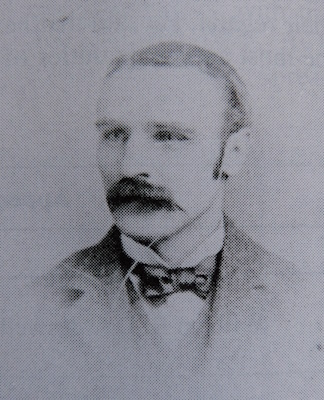
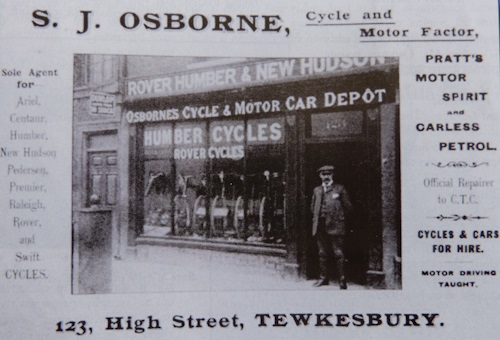
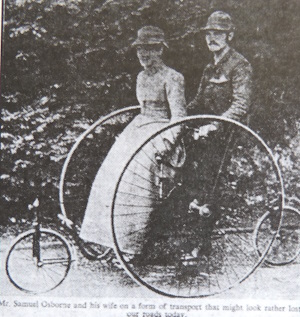
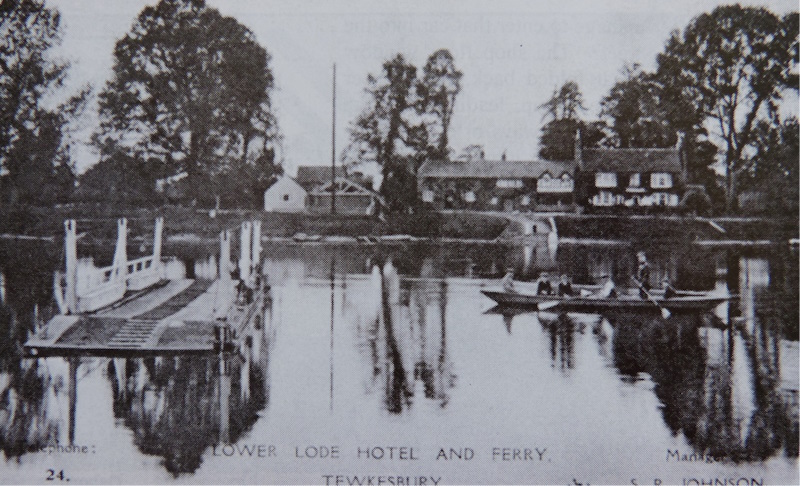
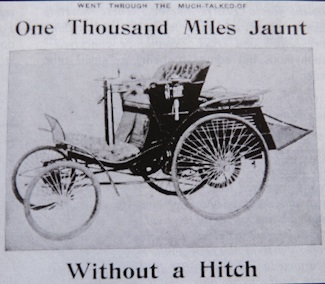
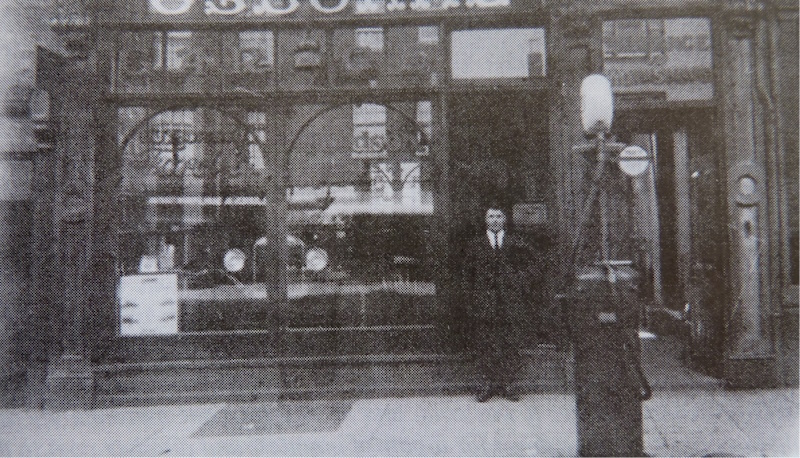
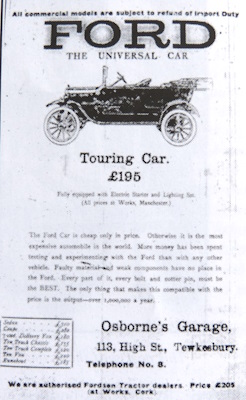
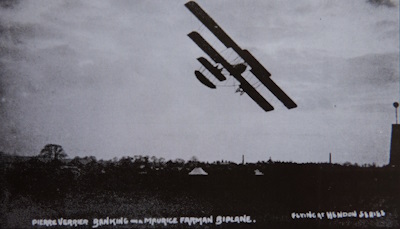
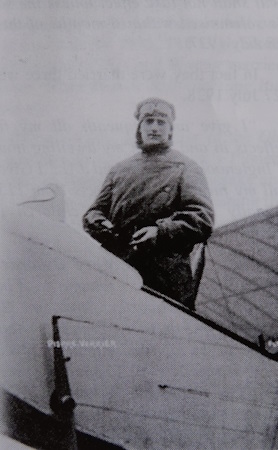
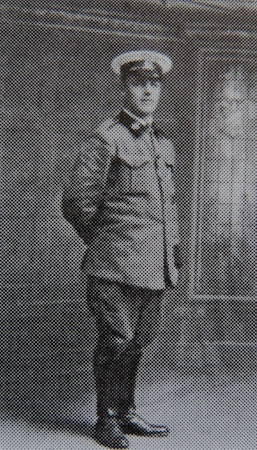
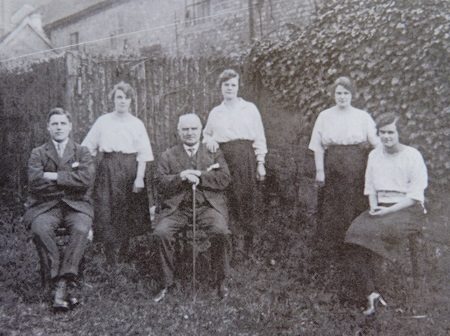
Comments